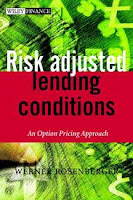
In order to operate their lending business profitably, banks must know all the costs involved in granting loans. In particular, all the expenses they incur in covering losses must be included. Provided loan risks can be calculated, it is possible in each case to charge a price that is appropriately adjusted for risk, thus making it possible to make high-risk loans.
In "Risk-adjusted Lending Conditions" the author presents a model, to measure and calculate loan risks, showing how it functions and how it may be applied. His approach has its origins in the ideas put forward by Black/Scholes in 1973, and thus owes much to option price theory. From this the author has succeeded in developing a solution such that, whatever a company's debt position and however its balance sheet may be structured, any situation can be individually assessed. Building on this, he demonstrates how combinations of loans with the lowest possible interest costs can be tailor-made for any company. The book contains numerous examples, making it easy for practising bankers to see how the model may be applied



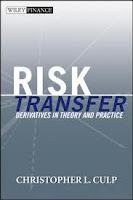
Based on an enormously popular "derivative instruments and applications" course taught by risk expert Christopher Culp at the University of Chicago, Risk Transfer will prepare both current practitioners and students alike for many of the issues and problems they will face in derivative markets. Filled with in-depth insight and practical advice, this book is an essential resource for those who want a comprehensive education and working knowledge of this major field in finance, as well as professionals studying to pass the GARP FRM exam.



This book offers a practical answer for the non-mathematician to all the questions any businessman always wanted to ask about risk quantification, and never dare to ask.
Enterprise-wide risk management (ERM) is a key issue for board of directors worldwide. Its proper implementation ensures transparent governance with all stakeholders’ interests integrated into the strategic equation. Furthermore, Risk quantification is the cornerstone of effective risk management,at the strategic and tactical level, covering finance as well as ethics considerations. Both downside and upside risks (threats & opportunities) must be assessed to select the most efficient risk control measures and to set up efficient risk financing mechanisms. Only thus will an optimum return on capital and a reliable protection against bankruptcy be ensured, i.e. long term sustainable development
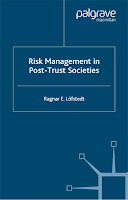
Risk communication helps companies, governments and institutions minimize disputes, resolve issues, and anticipate problems before they result in an irreversible breakdown in communications. Most policy makers still use outdated methods--developed at a time before health scares like BSE, genetically modified organisms and dioxin in Belgian chicken feed eroded public confidence in industry and government--to communicate policies and achieve their objectives. Good risk communication is still possible, however. In this book, through the use of a host of case studies from four countries, the author identifies a series of methods that are set to work in a post-trust society.



Under the new Basle Guidelines, all financial institutions subject to local banking laws will soon be required to operate under dramatically different risk exposure rules. Risk Management and Capital Adequacy provides details on the key risk approaches under these new guidelines and is the first book to analyze if and how they can be integrated. From conceptual frameworks to analyses of models and approaches, it provides a solid reference source for the information that everyone in risk management will soon need to know.

Covers the hottest topic in investment for multitrillion pension market and institutional investors
Institutional investors and fund managers understand they must take risks to generate superior investment returns, but the question is how much. Enter the concept of risk budgeting, using quantitative risks measurements, including VaR, to solve the problem. VaR, or value at risk, is a concept first introduced by bank dealers to establish parameters for their market short-term risk exposure. This book introduces VaR, extreme VaR, and stress-testing risk measurement techniques to major institutional investors, and shows them how they can implement formal risk budgeting to more efficiently manage their investment portfolios. Risk Budgeting is the most sophisticated and advanced read on the subject out there in the market.
http://www.ziddu.com/download/206545...t.com.pdf.html
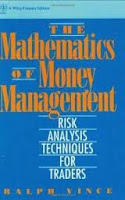
Every futures, options, and stock markets trader operates under a set of highly suspect rules and assumptions. Are you risking your career on yours? Exceptionally clear and easy to use, The Mathematics of Money Management substitutes precise mathematical modeling for the subjective decision-making processes many traders and serious investors depend on. Step-by-step, it unveils powerful strategies for creating and using key money management formulas--based on the rules of probability and modern portfolio theory--that maximizes the potential gains for the level of risk you are assuming. With them, you'll determine the payoffs and consequences of any potential trading decision and obtain the highest potential growth for your specified level of risk. You'll quickly decide: What markets to trade in and at what quantities When to add or subtract funds from an account How to reinvest trading profits for maximum yield The Mathematics of Money Management provides the missing element in modern portfolio theory that weds optimal f to the optimal portfolio.
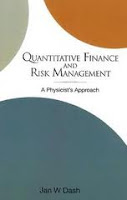
Written by a physicist with over 15 years of experience as a quant on Wall Street, this book treats a wide variety of topics. Presenting the theory and practice of quantitative finance and risk, it delves into the "how to" and "what it's like" aspects not covered in textbooks or research papers. Both standard and new results are presented. A "Technical Index" indicates the mathematical level; from zero to PhD mathematical background; for each section. The finance aspect in each section is self-contained. Real-life comments on "life as a quant" are included. This book is designed for scientists and engineers desiring to learn quantitative finance, and for quantitative analysts and finance graduate students. Parts will be of interest to research academics.